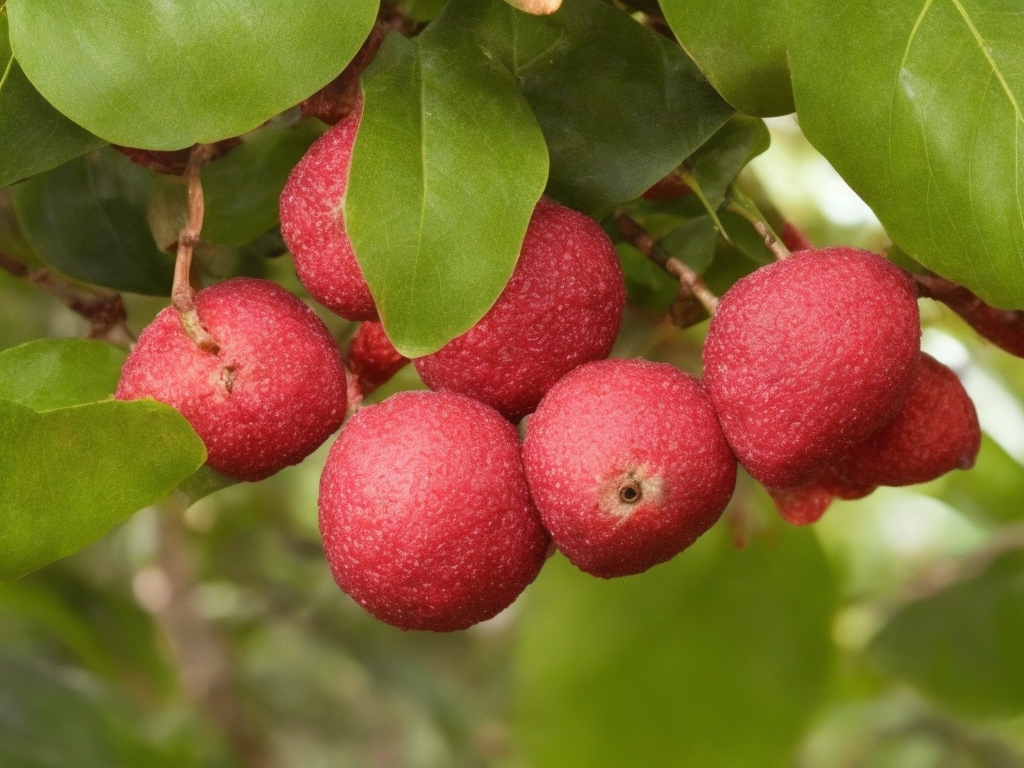In this article, you will learn all about litchi in english – its origin, uses, and the benefits it offers. Whether you’re new to litchi or already a fan, this information will help you appreciate this delicious and nutritious fruit even more.
Firstly, let’s talk about the origin of litchi. Originally native to China, litchi has a long history dating back thousands of years. Its cultivation has spread to various parts of Asia and other continents as well. Next, we’ll explore the uses of litchi. Besides being enjoyed fresh, litchi in english is often used in desserts, beverages, and even savory dishes. Its unique sweet and tangy flavor adds a delightful touch to any recipe. Finally, we will delve into the benefits of litchi. Packed with vitamins, minerals, and antioxidants, litchi is not only a tasty treat but also offers various health benefits, such as boosting the immune system and improving digestion. So, get ready to discover everything there is to know about litchi!

Overview
Litchi, also known as lychee, is a delicious and exotic fruit that has gained popularity worldwide. This article will provide you with an in-depth understanding of the origin, cultivation, uses, and benefits of litchi. So let’s dive into the fascinating world of litchi!
What is Litchi?
Litchi in english is a tropical fruit that belongs to the soapberry family. With its rough, red-colored outer skin and sweet, juicy flesh, this fruit has become a celebrated delicacy. People have cultivated this exquisite fruit for centuries, originating from China’s Guangdong and Fujian provinces.
Historical Background
The history of litchi dates back thousands of years. According to ancient texts and poems dating back to the 11th century BC, this fruit finds its origins in China, where it was first documented. Litchi in english was highly treasured in the imperial courts and was often presented as a gift to the emperors.
Origin
Native to Guangdong and Fujian Provinces
Litchi is native to the southern regions of China, particularly Guangdong and Fujian provinces. The warm and humid climate of these areas provides the ideal conditions for the fruit to thrive. The locals in these regions have been cultivating litchi for centuries and consider it a part of their cultural heritage.
Spread to Southeast Asia
Over time, litchi spread to other parts of Asia, including Southeast Asian countries like Thailand, Vietnam, and the Philippines. The people in these regions wholeheartedly embraced the fruit for its delightful flavor and refreshing taste.
Introduction to Other Parts of the World
During the 17th century, litchi made its way to other parts of the world through trade routes. The fruit found its way to India, where it became popular among the royals and nobles. Later on, it made its way to various tropical regions, including Hawaii, Florida, and Brazil.

Appearance and Flavor
External Appearance
Litchi has a distinctive appearance that sets it apart from other fruits. The fruit is round or oval-shaped, about the size of a golf ball, with a rough, bumpy red skin. Peeling the skin effortlessly reveals the translucent white flesh inside.
Internal Features
The flesh of the litchi fruit is juicy and succulent, with a jelly-like texture. The fruit encloses a single seed that is not typically eaten. The flesh is translucent and has a mild fragrance that intensifies as the fruit ripens.
Distinctive Flavor
The flavor of litchi in english is often described as sweet and refreshing, with hints of floral notes. It has a delicate balance of sweetness and tartness, making it a delightful treat for your taste buds. The unique combination of flavors makes litchi a sought-after fruit in both culinary and beverage preparations.
Cultivation
Preferred Growing Conditions
Litchi thrives in tropical and subtropical climates, where temperatures range between 20 to 32 degrees Celsius (68 to 90 degrees Fahrenheit). It requires a high level of humidity and ample rainfall during its growing season. Well-drained soil enriched with organic matter is ideal for litchi cultivation.
Planting and Propagation
Litchi trees are usually propagated through grafting or budding. The process involves grafting a litchi scion onto a rootstock, which ensures the desired characteristics of the fruit. The trees require full sun exposure for optimal growth, and regular pruning is necessary to maintain their shape and size.
Pest and Disease Management
Like any other fruit tree, litchi trees are susceptible to certain pests and diseases. Common pests include aphids, mites, and fruit worms. Regular inspection and timely treatment with organic or chemical pesticides can help control infestations. Proper sanitation practices and the use of fungicides can effectively manage diseases like anthracnose and fruit rot.

Harvesting and Storage
Maturity and Harvesting
Litchi trees bear fruit once a year, typically in the summer months. The fruits ripen on the tree and change from green to a vibrant red color. Harvesting litchi at the right stage of maturity is crucial to ensure optimal flavor and texture. The fruits should be firm, plump, and free from blemishes before they are picked.
Post-harvest Handling and Storage Techniques
Litchi fruits are highly perishable and require careful handling and storage to maintain their quality. They should be stored at cool temperatures, preferably between 4 to 8 degrees Celsius (39 to 46 degrees Fahrenheit), to prolong their shelf life. Wrapping the fruits individually in breathable material, such as newspaper, can help prevent excessive moisture loss and maintain their freshness.
Uses in Culinary Delights
Popular Recipes
Litchi is a versatile fruit that can be enjoyed in various culinary creations. Its sweet and juicy flesh adds a burst of flavor to both sweet and savory dishes. Litchi can be included in fruit salads, smoothies, sorbets, and ice creams to enhance their taste. It can also be used as a topping for cakes and desserts or incorporated into sauces and marinades to add a unique twist.
Regional Delicacies
In addition to its use in international cuisine, litchi in english holds a special place in regional delicacies. Place like China, litchi is often served fresh or dried as a dessert or added to dishes like sweet and sour pork. In Southeast Asia, litchi is a common ingredient in refreshing beverages and traditional desserts like halo-halo and chendol.

Nutritional Value
Vitamins and Minerals
Litchi is packed with essential vitamins and minerals that contribute to its nutritional value. It is a good source of vitamin C, providing more than 100% of the recommended daily intake in just one serving. Litchi also contains vitamins B, potassium, copper, and manganese.
Antioxidant Properties
Litchi contains high levels of antioxidants, including flavonoids and phenolic compounds. These antioxidants help neutralize harmful free radicals in the body, reducing the risk of chronic diseases and promoting overall well-being.
Potential Health Benefits
The consumption of litchi has been associated with various health benefits. It is believed to support a healthy immune system, promote cardiovascular health, and improve digestion. Litchi’s antioxidant properties also contribute to healthy skin and hair.
Industrial Uses
Litchi Products in Various Industries
Apart from its culinary uses, the unique properties of litchi find application in various industries. The beauty and cosmetic industry commonly incorporates litchi extracts and oils into skincare products, harnessing their moisturizing and anti-aging properties. The fragrance industry incorporates the floral scent of litchi into perfumes and scented candles.
Medicinal Applications
Litchi has a long history of medicinal use in traditional Chinese medicine. Litchi is reputed to have cooling properties and is known for its ability to alleviate symptoms of fever, heatstroke, and sore throat. Additionally, herbal remedies incorporate litchi extracts for their potential anti-inflammatory and antiviral effects.
Litchi Festivals
Cultural Celebrations
Litchi festivals are celebrated in various parts of the world to honor this beloved fruit. These festivals showcase litchi in all its glory, with activities such as fruit picking, cooking competitions, and cultural performances. They provide a platform to promote litchi cultivation and tourism in the respective regions.
Promotion of Litchi Industry
Litchi festivals play a crucial role in promoting the litchi industry and creating awareness about the fruit’s benefits. They attract tourists and locals alike, providing an opportunity to showcase litchi-based products, generate income for farmers, and foster a sense of pride in the litchi-growing communities.
Conclusion
In conclusion, litchi is a delightful fruit that has captured the hearts and taste buds of people worldwide. Its journey from ancient China to becoming a global favorite is a testament to its exceptional flavor and versatility. Cultivated in tropical regions, litchi not only adds a burst of sweetness to culinary delights but also offers a range of potential health benefits. So the next time you come across this exotic fruit, be sure to indulge yourself in its tantalizing flavors and enjoy the abundance of goodness it brings.

Hi, I’m King Phils, a Dragon Fruit enthusiast and blogger. Welcome to my website, where I share everything I know and love about this amazing fruit.